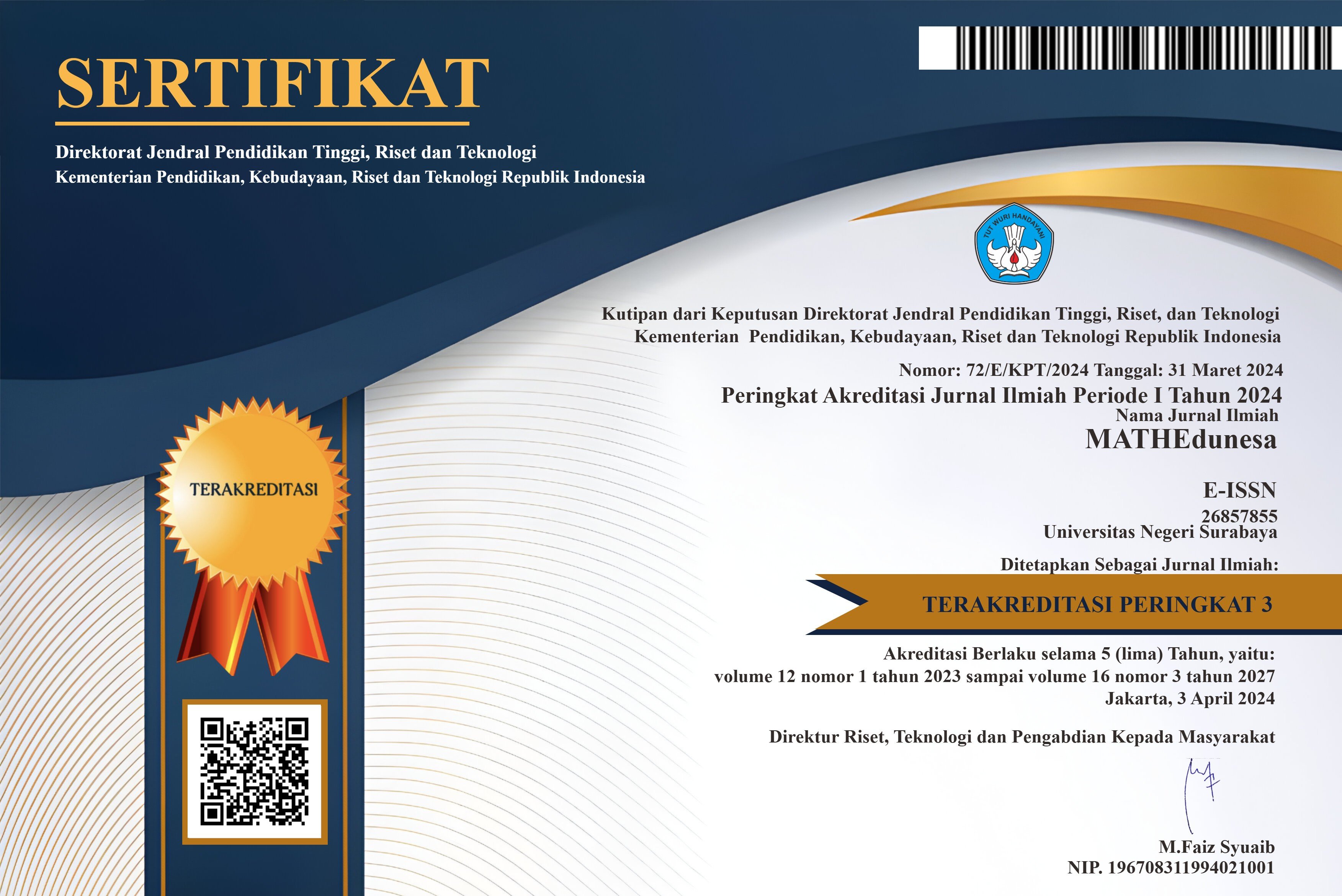Pemberian Scaffolding Terhadap Miskonsepsi Siswa Dalam Menyelesaikan Soal Materi himpunan
DOI:
https://doi.org/10.26740/mathedunesa.v9n1.p221-230Abstract
This study aims to describe the students' misconceptions in completing sets of material problems before and after scaffolding, the form of scaffolding provided, and the impact of giving scaffolding. This research is a qualitative study, which was conducted in Junior High School of 32 Surabaya by selecting 2 subjects who experienced misconceptions from one class of 35 students. The instrument used was a diagnostic test I and II equipped with CRI, interview guidelines and scaffolding guidelines. The material chosen in this study is the set. Misconceptions in this research are analyzed based on its type, namely classification, correlation and theoretical misconceptions. Scaffolding in this research is explaining reviewing, and restructuring which consists of (1) looking, touching and verbalising (2) Pompting and probing (3) interpreting student's actions and talk, (4) parallelling modeling and (5) students explaining and justifyng, restructuring which consists of (1) identifying meaningful context (2) simplifying the problem (3) re-pharasing studdent's talk (4) negotiating meaning, developing conceptual thinking consisting of developing representational tools and making connections. Based on research conducted by researchers, there are 16.53% of classification misconceptions, 49.59% of correlation misconceptions exist and 49.59% of theoretical misconceptions. After being given scaffolding, students' misconceptions in solving the set material matter diminished and no longer even experienced misconceptions. Therefore, scaffolding is an alternative to responding to misconceptions experienced by students in solving set material problems.
Keywords: Misconception, scaffolding, set.Downloads
Downloads
Published
Issue
Section
 Abstract views: 270
,
Abstract views: 270
, PDF Downloads: 406
PDF Downloads: 406




